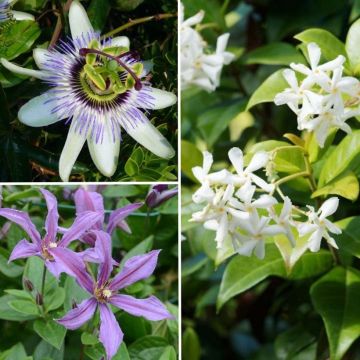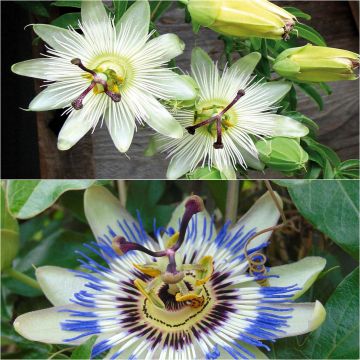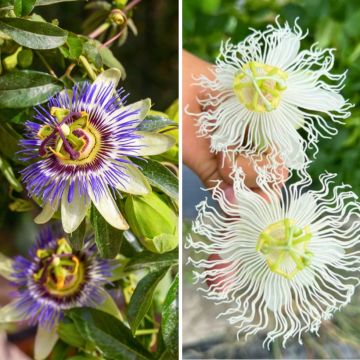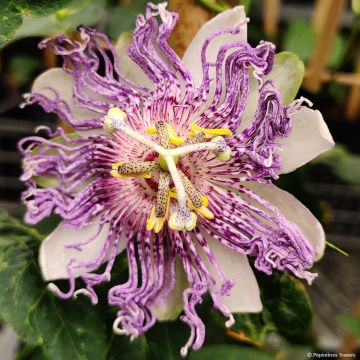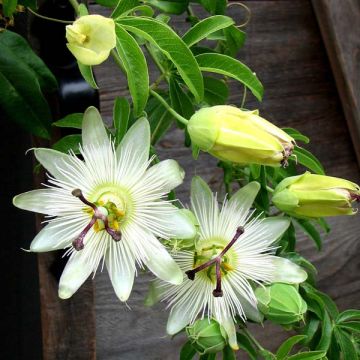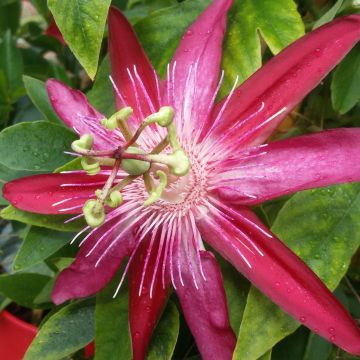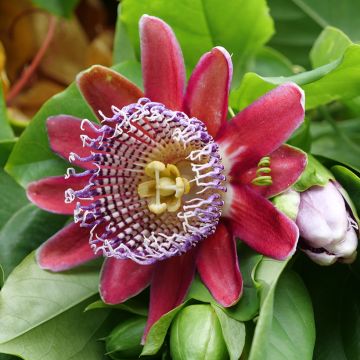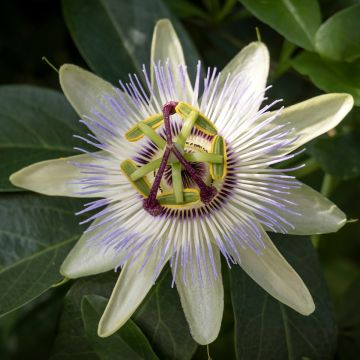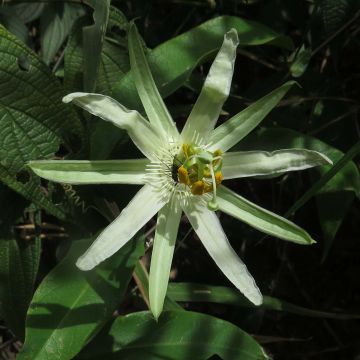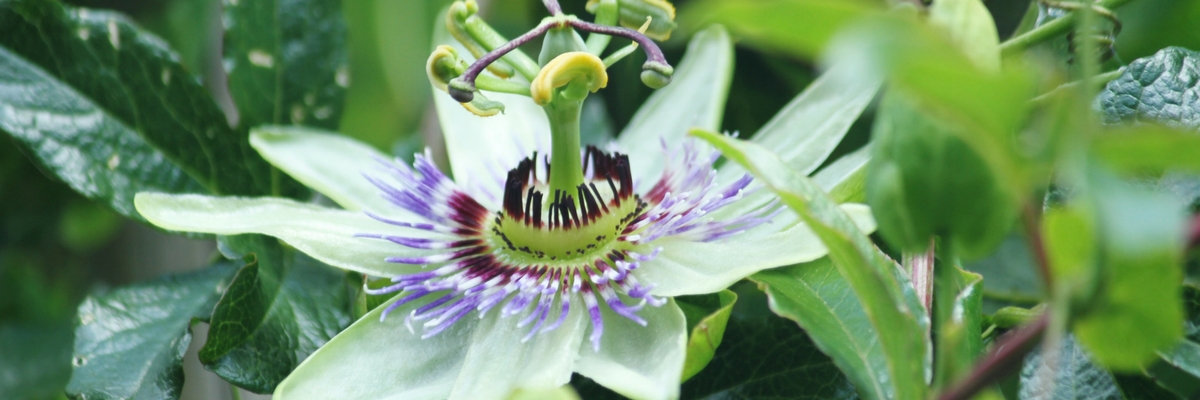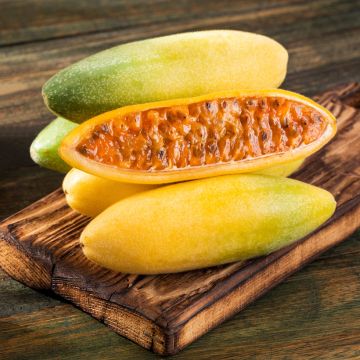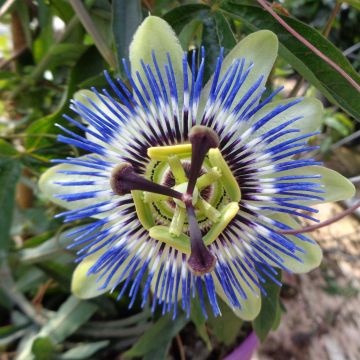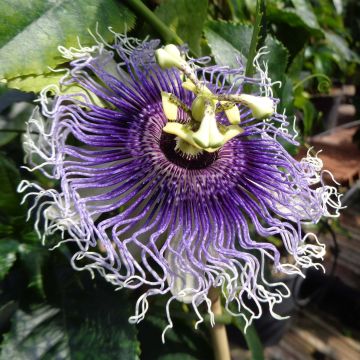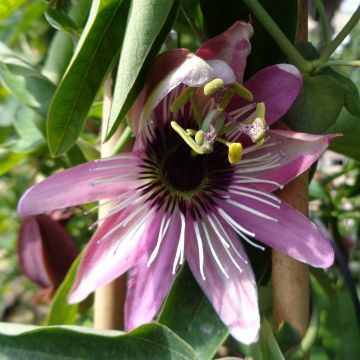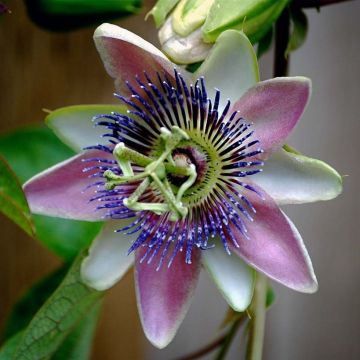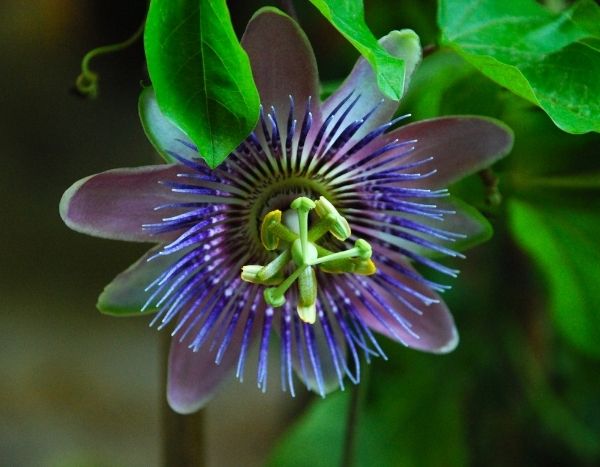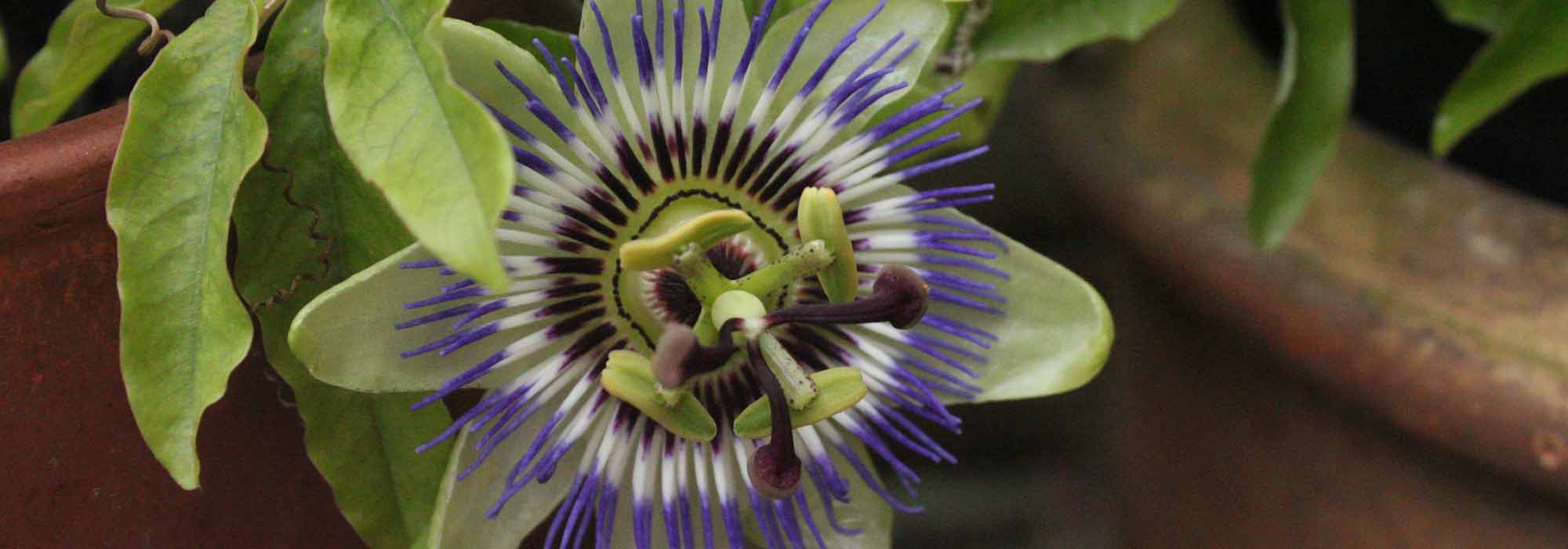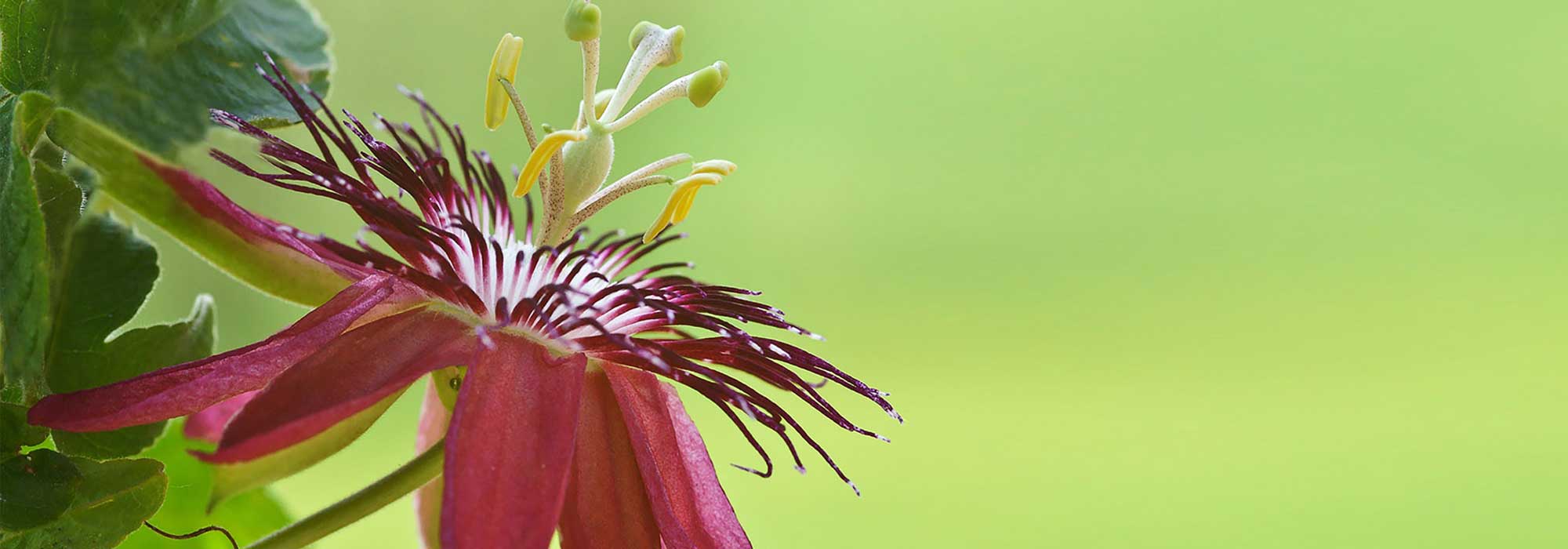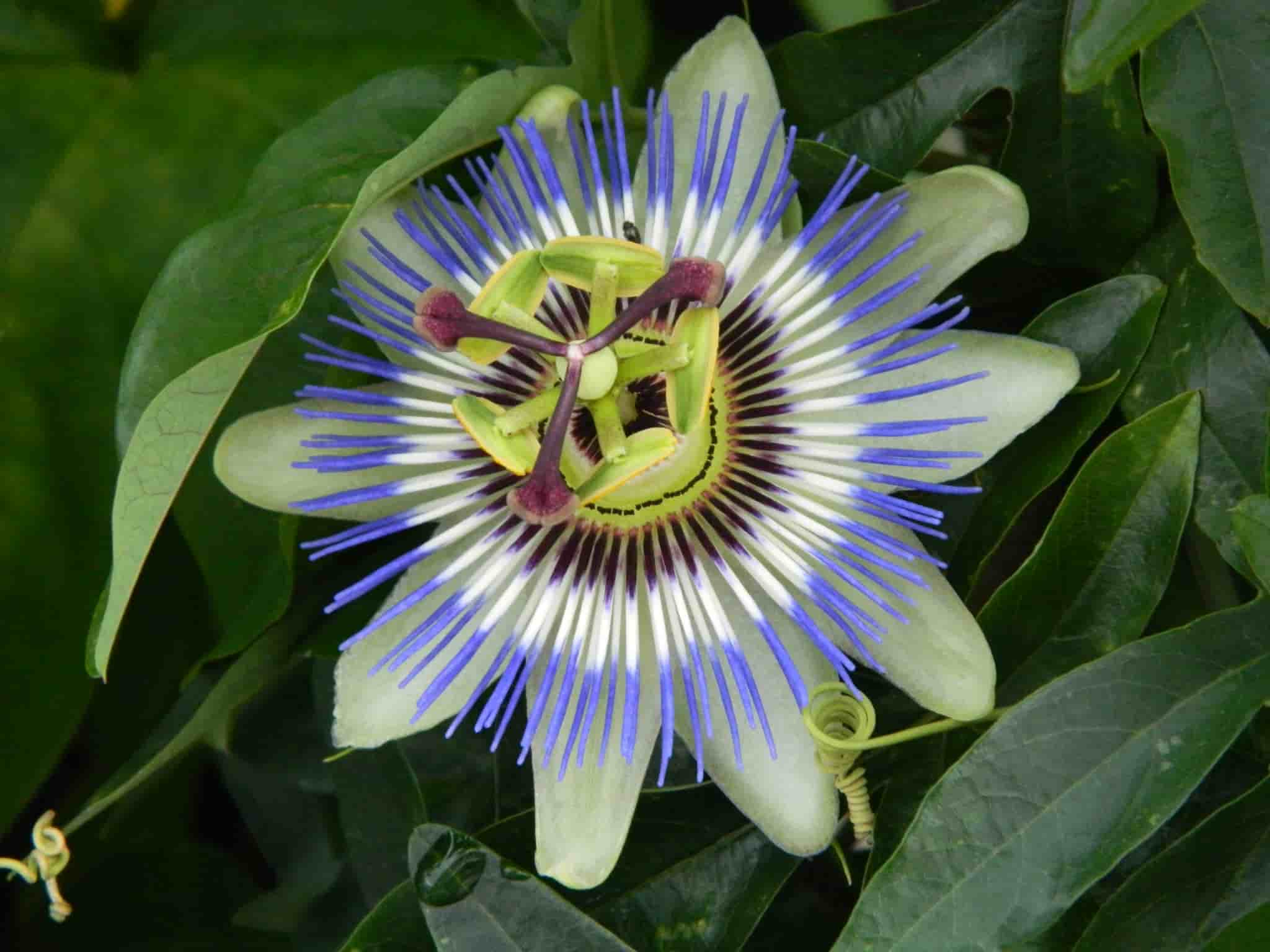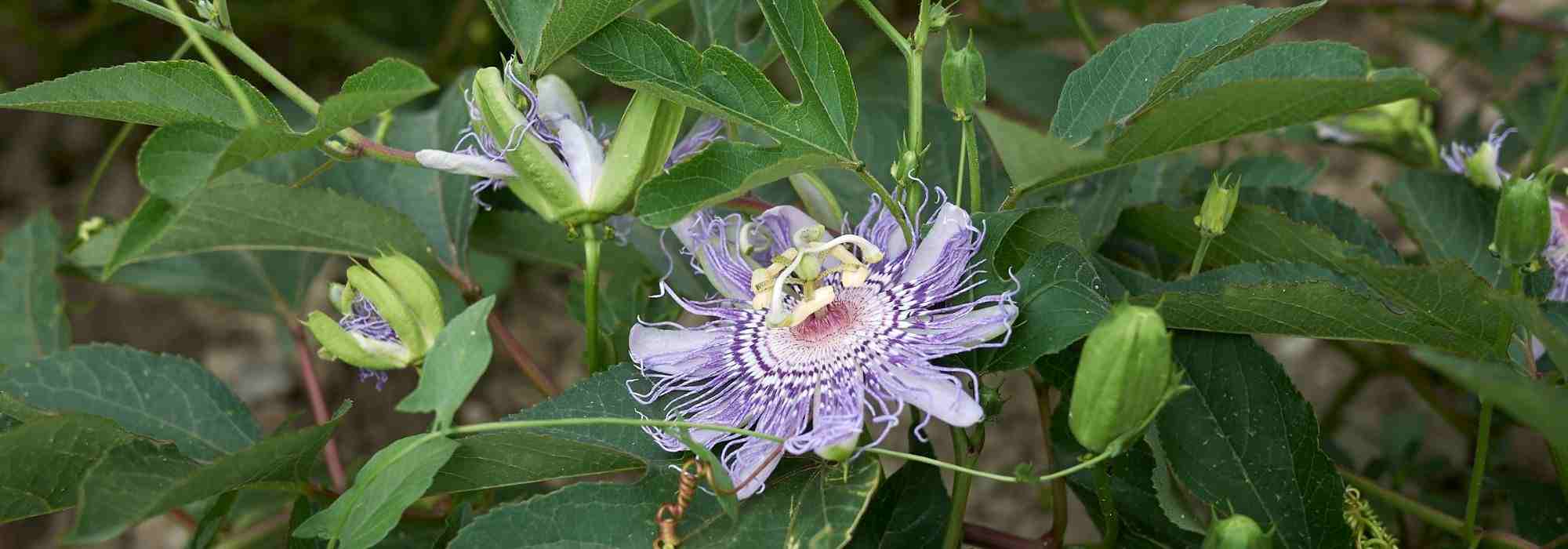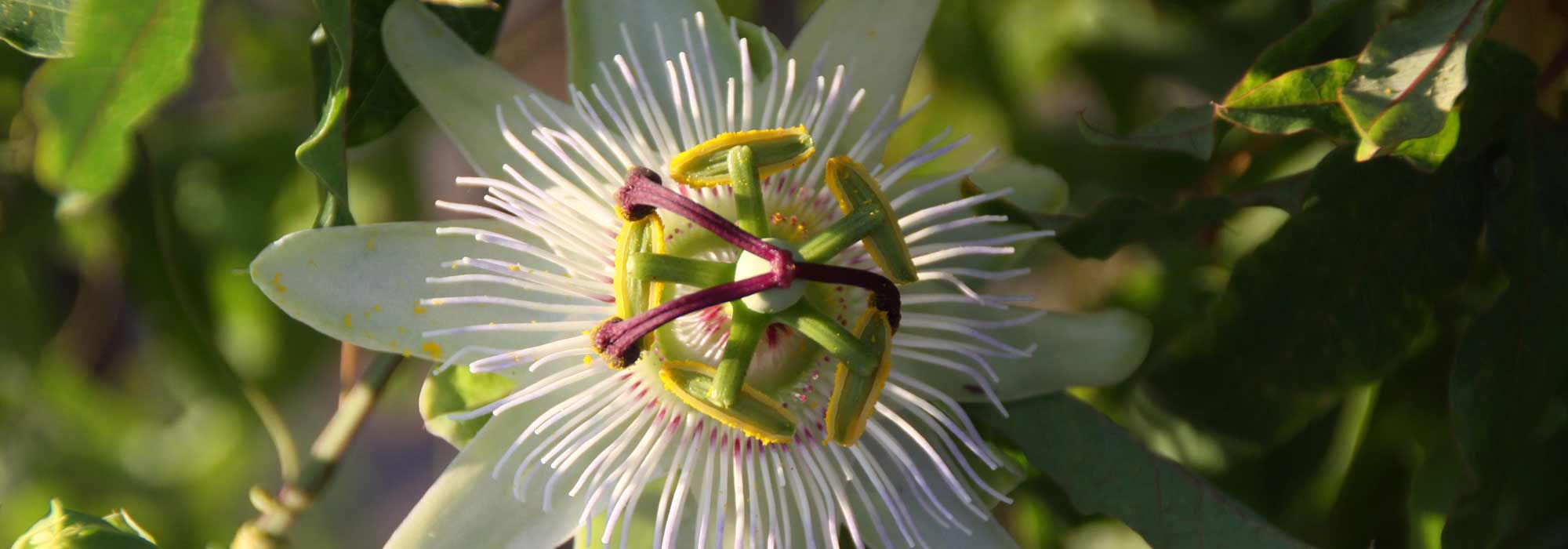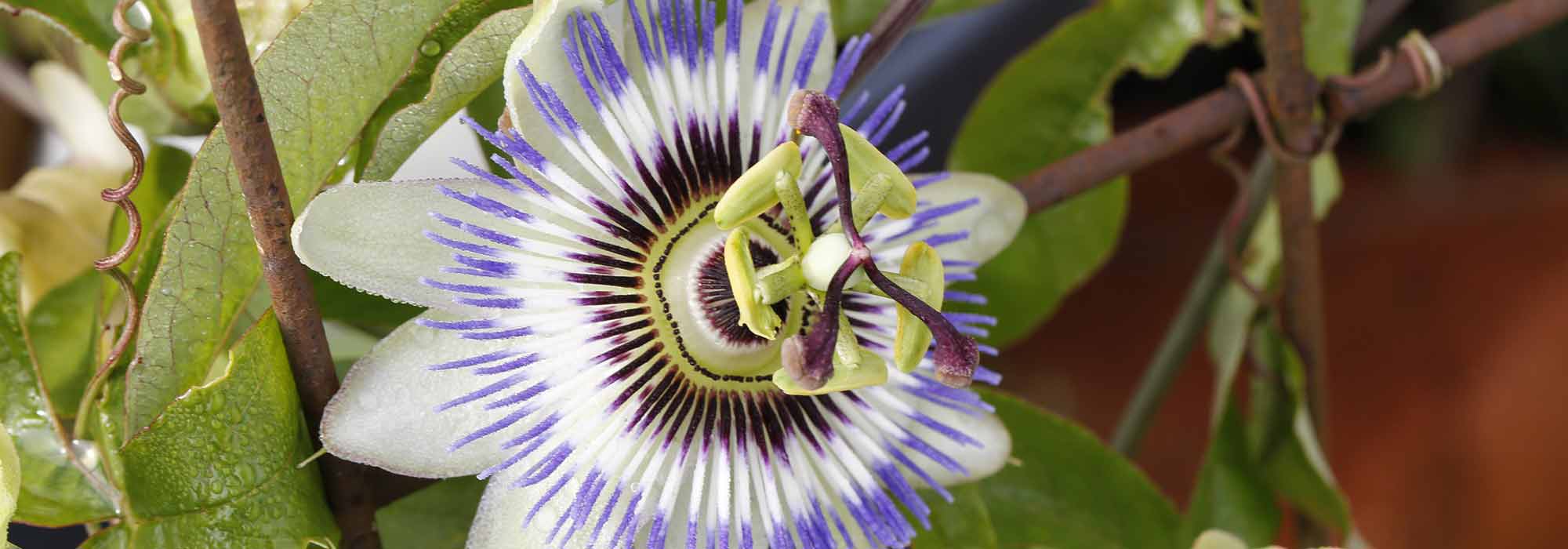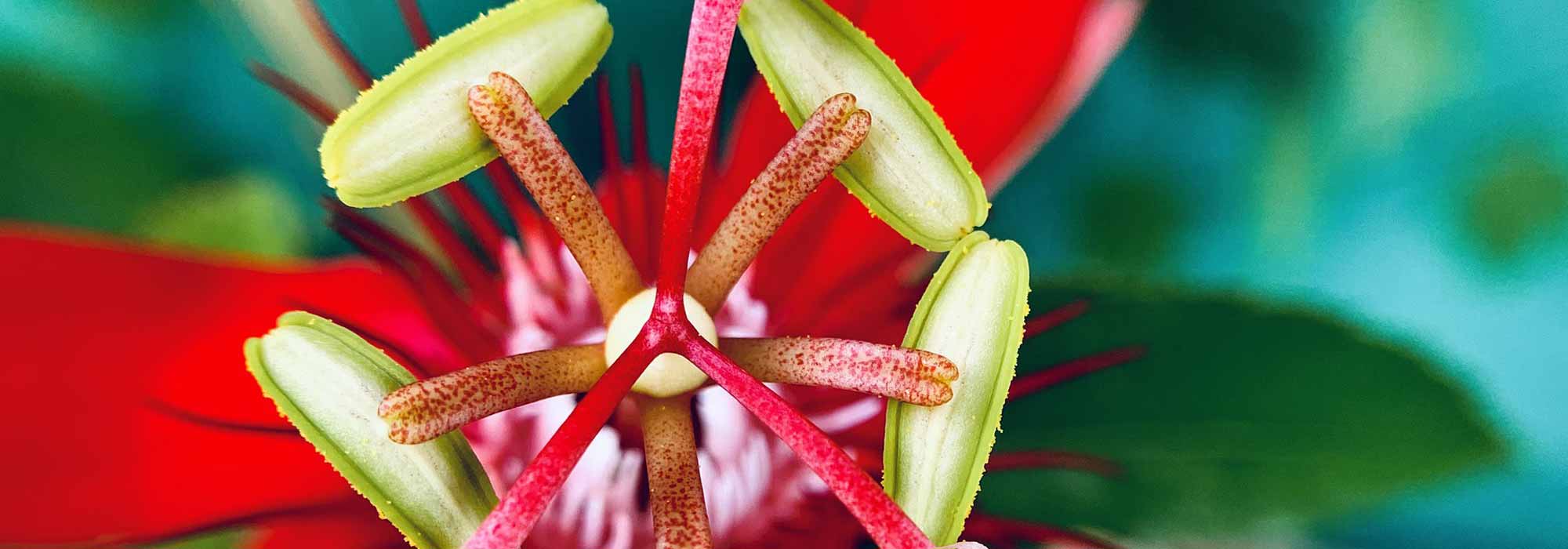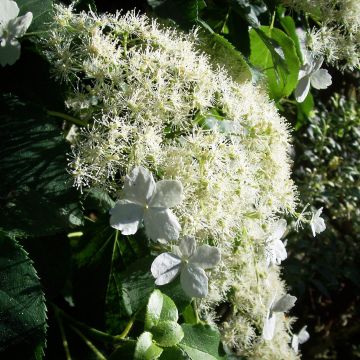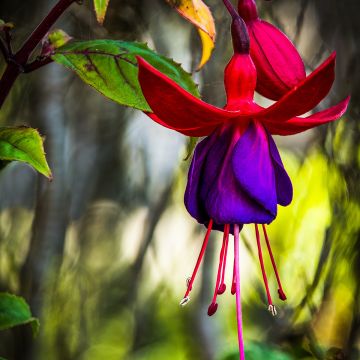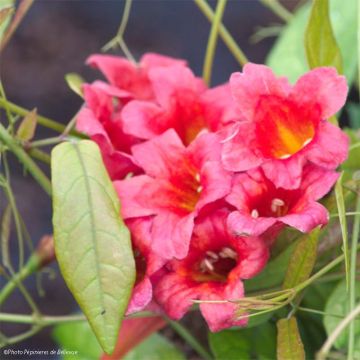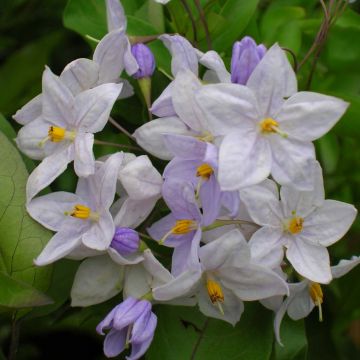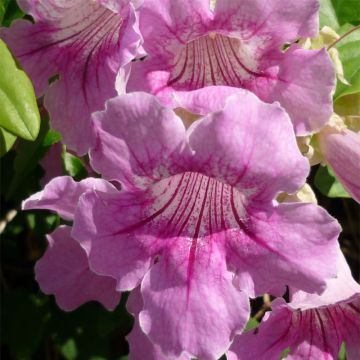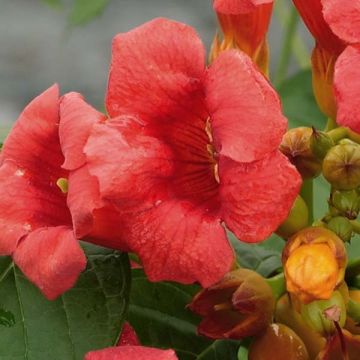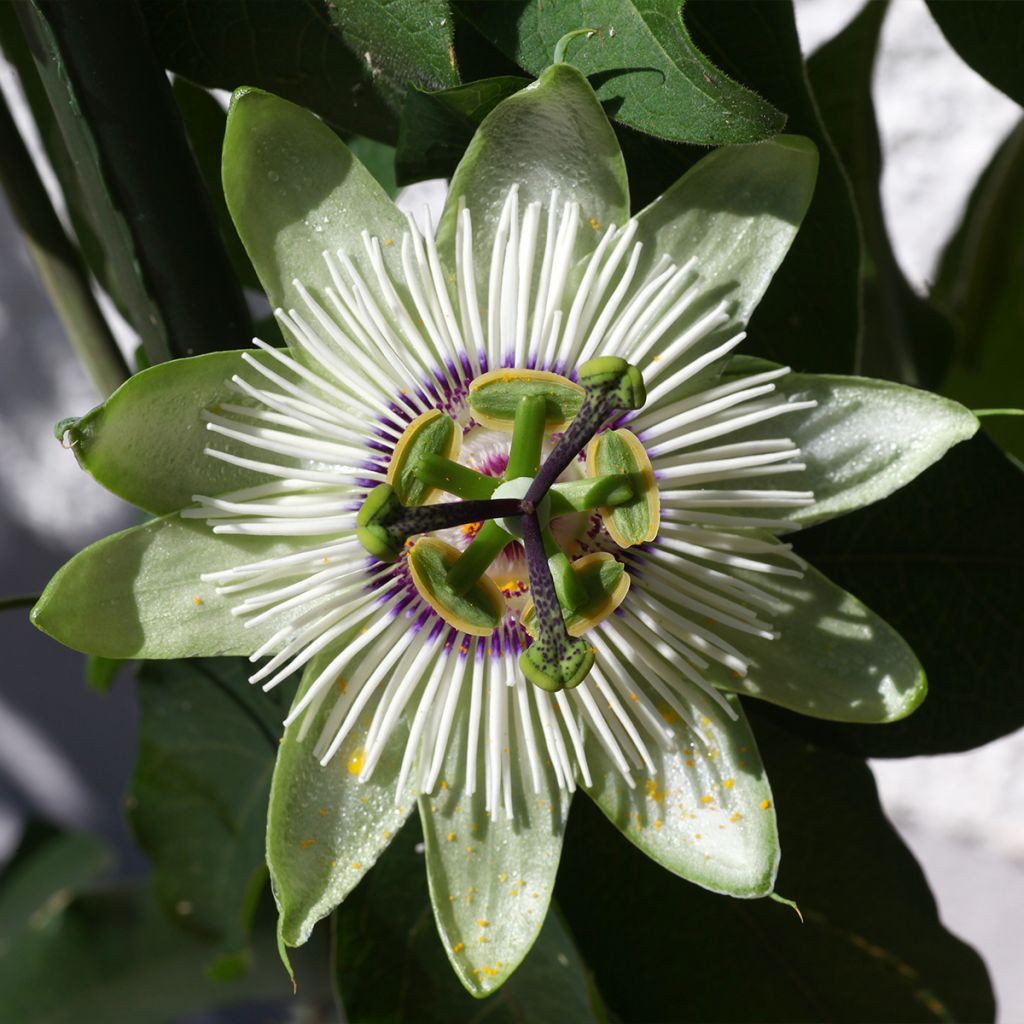

Passiflora White Lightning- Passion Flower
Passiflora White Lightning- Passion Flower
Passiflora White lightening
Passion Flower, Passion Vine
Special offer!
Receive a €20 voucher for any order over €90 (excluding delivery costs, credit notes, and plastic-free options)!
1- Add your favorite plants to your cart.
2- Once you have reached €90, confirm your order (you can even choose the delivery date!).
3- As soon as your order is shipped, you will receive an email containing your voucher code, valid for 3 months (90 days).
Your voucher is unique and can only be used once, for any order with a minimum value of €20, excluding delivery costs.
Can be combined with other current offers, non-divisible and non-refundable.
Why not try an alternative variety in stock?
View all →This plant carries a 6 months recovery warranty
More information
We guarantee the quality of our plants for a full growing cycle, and will replace at our expense any plant that fails to recover under normal climatic and planting conditions.
Would this plant suit my garden?
Set up your Plantfit profile →
Description
The Passiflora 'White Lightning' is a hybrid passion flower derived from the Blue Passion Flower, from which it has inherited good hardiness. Its beautiful white flowers have a multicoloured centre, with bluish filaments, stamens, and pistils mixing yellow, green, and dark purple. Moderately vigorous, this climbing plant will quickly cover a trellis. Moderately hardy, this passion flower can be grown in open ground in regions with not-too-cold winters. Elsewhere, it will make a beautiful conservatory plant or should be protected during winter if it spends the summer outdoors.
Mostly native to tropical areas of South America, Passion Flowers belong to the Passifloraceae family, the best-known genus. This genus includes more than 500 species and numerous spontaneous or horticultural hybrids. Mostly tropical plants, but also subtropical for some species that can survive winter in the mildest regions, in sheltered areas.
The Passiflora caerulea is one of the hardiest, able to withstand temperatures around -12°C. 'Constance Elliot' is a well-known variety for its pure white flowers. And from the cross-breeding between Passiflora caerulea and its variety 'Constance Elliot', 'White Lightning' was born, which presents an intermediate flower between its two parents. It has inherited the 10 white petals and sepals from 'Constance Elliot', while the centre of the flower is closer to the species P. Caerulea. The crown of fine decorative filaments in Passion Flowers is dark purple at the base, then white in the intermediate part, and finally bluish at the tip, vaguely resembling a British cockade... The central sexual floral parts are, for the stamens, in green tones and, for the pistil, purple striped, thus contrasting nicely with the white of the petals and sepals. This very sophisticated floral ensemble contributes to the fascination exerted by this plant, which has been associated with the passion of Christ for several centuries, with each floral element being credited with a particular meaning (the Apostles, the nails of the crucifixion...). In White Lightning, the flowers are quite large, reaching 9 cm (4in) in diameter. They are well highlighted by the deeply lobed leaves, dark green and somewhat glossy. These leaves are semi-evergreen, depending on winter conditions.
The 'White Lightning' passion flower is a fast-growing climbing plant that attaches to its support using tendrils, reaching a height of up to 3.50 or 4 m (11 or 13ft) in favourable conditions, with a width of about 2 m (7ft). It will have more modest dimensions when grown in a container and can be pruned to limit its growth. The well-protected stump of this passion flower can withstand temperatures around -5°C to -10°C.
The 'White Lightning' Passion Flower grows in rich, moist, well-drained soil in sunny or partially shaded locations. It thrives in mild climates in winter and not too dry in summer. This climbing plant will be very decorative when trained on a wire mesh or trellis. It must be brought indoors during winter in an unheated conservatory or a sufficiently bright garage in colder climates. To create a scene evoking distant lands, plant it alongside other exotic-looking plants, such as the famous Musa basjoo, a hardy ornamental banana tree known for its good hardiness. Among palm trees, the Trachycarpus wagnerianus, a compact windmill palm, is a good choice. And among climbers, you can associate it with the surprising Campsis capreolate, a Trumpet Creeper with red and yellow bicoloured flowers that emit a sweet chocolate fragrance that will delight young and old alike!
Passiflora White Lightning- Passion Flower in pictures
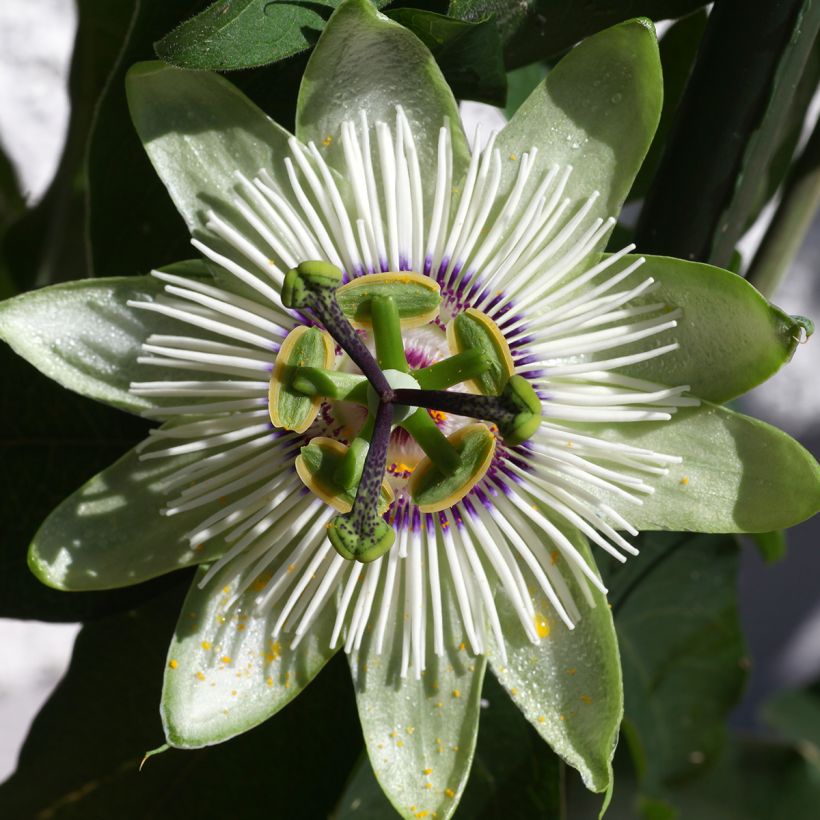

Plant habit
Flowering
Foliage
Botanical data
Passiflora
White lightening
Passifloraceae
Passion Flower, Passion Vine
Cultivar or hybrid
Other Passionflowers
View all →Planting and care
The 'White Lightning' Passionflower is a sun-loving plant that can be grown in the ground in mild winter regions: it can withstand temperatures as low as -5 °C to -10 °C and will fare even better if you protect its stump with a thick mulch. Everywhere else, it should be cultivated in a large pot, which allows it to be sheltered in winter. Plant it in a bright, but not scorching, exposure, in ordinary, well-drained soil that remains slightly moist throughout the growing season, but not waterlogged. Place it on a support to support the weight of its vegetation. Direct its branches well onto the support, as the growth is quite exuberant. Pruning before winter is recommended to maintain a reasonable size. Do not hesitate to cut back the main branches to facilitate growth. Remove dead or misplaced branches and prune excess branches to allow air circulation. Be aware of scale insects, whiteflies, and the cucumber mosaic virus. Treat preventively.
Planting period
Intended location
Care
Planting & care advice
This item has not been reviewed yet - be the first to leave a review about it.
Similar products
Haven't found what you were looking for?
Hardiness is the lowest winter temperature a plant can endure without suffering serious damage or even dying. However, hardiness is affected by location (a sheltered area, such as a patio), protection (winter cover) and soil type (hardiness is improved by well-drained soil).

Photo Sharing Terms & Conditions
In order to encourage gardeners to interact and share their experiences, Promesse de fleurs offers various media enabling content to be uploaded onto its Site - in particular via the ‘Photo sharing’ module.
The User agrees to refrain from:
- Posting any content that is illegal, prejudicial, insulting, racist, inciteful to hatred, revisionist, contrary to public decency, that infringes on privacy or on the privacy rights of third parties, in particular the publicity rights of persons and goods, intellectual property rights, or the right to privacy.
- Submitting content on behalf of a third party;
- Impersonate the identity of a third party and/or publish any personal information about a third party;
In general, the User undertakes to refrain from any unethical behaviour.
All Content (in particular text, comments, files, images, photos, videos, creative works, etc.), which may be subject to property or intellectual property rights, image or other private rights, shall remain the property of the User, subject to the limited rights granted by the terms of the licence granted by Promesse de fleurs as stated below. Users are at liberty to publish or not to publish such Content on the Site, notably via the ‘Photo Sharing’ facility, and accept that this Content shall be made public and freely accessible, notably on the Internet.
Users further acknowledge, undertake to have ,and guarantee that they hold all necessary rights and permissions to publish such material on the Site, in particular with regard to the legislation in force pertaining to any privacy, property, intellectual property, image, or contractual rights, or rights of any other nature. By publishing such Content on the Site, Users acknowledge accepting full liability as publishers of the Content within the meaning of the law, and grant Promesse de fleurs, free of charge, an inclusive, worldwide licence for the said Content for the entire duration of its publication, including all reproduction, representation, up/downloading, displaying, performing, transmission, and storage rights.
Users also grant permission for their name to be linked to the Content and accept that this link may not always be made available.
By engaging in posting material, Users consent to their Content becoming automatically accessible on the Internet, in particular on other sites and/or blogs and/or web pages of the Promesse de fleurs site, including in particular social pages and the Promesse de fleurs catalogue.
Users may secure the removal of entrusted content free of charge by issuing a simple request via our contact form.
The flowering period indicated on our website applies to countries and regions located in USDA zone 8 (France, the United Kingdom, Ireland, the Netherlands, etc.)
It will vary according to where you live:
- In zones 9 to 10 (Italy, Spain, Greece, etc.), flowering will occur about 2 to 4 weeks earlier.
- In zones 6 to 7 (Germany, Poland, Slovenia, and lower mountainous regions), flowering will be delayed by 2 to 3 weeks.
- In zone 5 (Central Europe, Scandinavia), blooming will be delayed by 3 to 5 weeks.
In temperate climates, pruning of spring-flowering shrubs (forsythia, spireas, etc.) should be done just after flowering.
Pruning of summer-flowering shrubs (Indian Lilac, Perovskia, etc.) can be done in winter or spring.
In cold regions as well as with frost-sensitive plants, avoid pruning too early when severe frosts may still occur.
The planting period indicated on our website applies to countries and regions located in USDA zone 8 (France, United Kingdom, Ireland, Netherlands).
It will vary according to where you live:
- In Mediterranean zones (Marseille, Madrid, Milan, etc.), autumn and winter are the best planting periods.
- In continental zones (Strasbourg, Munich, Vienna, etc.), delay planting by 2 to 3 weeks in spring and bring it forward by 2 to 4 weeks in autumn.
- In mountainous regions (the Alps, Pyrenees, Carpathians, etc.), it is best to plant in late spring (May-June) or late summer (August-September).
The harvesting period indicated on our website applies to countries and regions in USDA zone 8 (France, England, Ireland, the Netherlands).
In colder areas (Scandinavia, Poland, Austria...) fruit and vegetable harvests are likely to be delayed by 3-4 weeks.
In warmer areas (Italy, Spain, Greece, etc.), harvesting will probably take place earlier, depending on weather conditions.
The sowing periods indicated on our website apply to countries and regions within USDA Zone 8 (France, UK, Ireland, Netherlands).
In colder areas (Scandinavia, Poland, Austria...), delay any outdoor sowing by 3-4 weeks, or sow under glass.
In warmer climes (Italy, Spain, Greece, etc.), bring outdoor sowing forward by a few weeks.






























